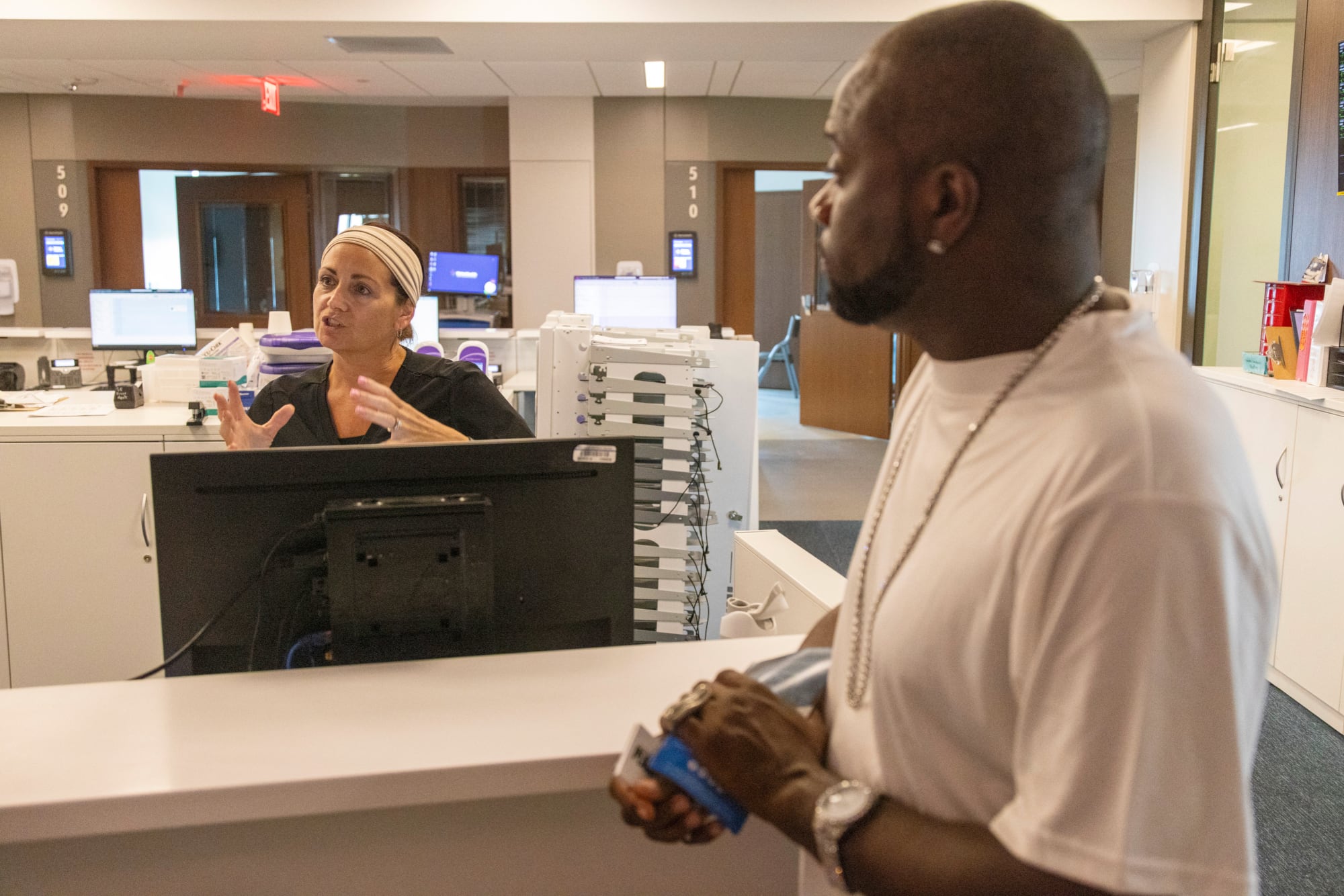CLEVELAND, Ohio – As violence spikes in Cleveland’s summer months, MetroHealth Medical Center’s emergency room is at its busiest.
On July 12, cleveland.com and The Plain Dealer reporter Lucas Daprile and photographer David Petkiewicz spent a night there,
recording how doctors, nurses and advocates work to help families at their worst moments.
Here are takeaways from their work, published Sunday:
1. Violence interrupters play a crucial role in breaking cycles of retaliation.
Jeff Crosby, a 46-year-old former gang member who works as a violence interrupter for the Cleveland Peacemakers Alliance, uses his “trench knowledge” and street credibility to prevent retaliatory violence.
In one instance, he successfully intervened when a woman’s brother threatened revenge after she was pistol-whipped. Crosby’s approach involves getting people to weigh the consequences of retaliation, leveraging his extensive network — “I know someone in every hood” — to defuse potentially violent situations before they escalate.
2. MetroHealth serves as Cleveland’s safety-net hospital with a unique mission.
As one of Cleveland’s two Level 1 trauma centers for adults, MetroHealth fills a special niche by accepting patients regardless of their ability to pay. The hospital is primarily funded through Medicare, Medicaid, private insurance and a $35 million annual contribution from Cuyahoga County taxpayers toward its $2 billion budget.
Nurse Megan Kunker expressed pride in the hospital’s role serving the underserved and uninsured, describing MetroHealth’s identity as “nose rings and tattoos” compared to the more formal Cleveland Clinic and University Hospitals.
3. Social workers connect victims to vital services while helping them process trauma.
Monica Lee, a MetroHealth social worker, partners with violence interrupters like Crosby to provide comprehensive support to violence victims. She connects them with essential services, such as housing, food and counseling, while also helping them navigate practical matters, such as filing police reports to get medical bills covered through the Victims of Crime Act.
Lee has observed how people in violence-prone neighborhoods become “desensitized” to gunfire until they or someone close to them is injured, creating a moment of clarity about mortality that can be leveraged for intervention.
4. Recovery from violence involves both physical healing and mental transformation.
Daprile’s piece highlights the story of “Joe,” a gunshot victim recovering at MetroHealth after being in a coma for weeks. Joe credits Crosby’s regular visits and mentorship with helping him avoid seeking revenge.
Joe faces a lengthy five-month recovery, including two to three more months in the hospital, dealing with significant limitations, such as being unable to eat solid food because of his tracheostomy tube. Despite his suffering, Joe expresses gratitude for surviving: “I’m blessed. For real. I could have been dead.”






